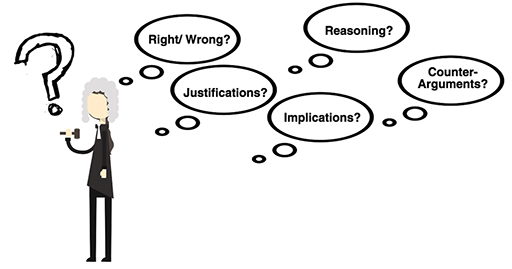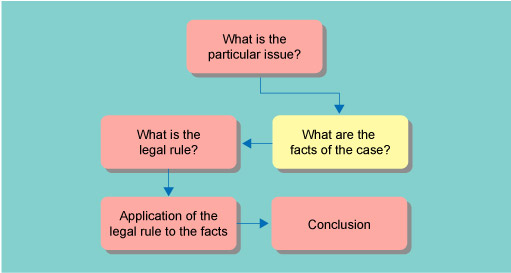2 A brief introduction to legal reasoning
Good legal reasoning requires logical argument. One form of logical argument is syllogism. In syllogistic reasoning, one proposition is deduced from two or more others. The proposition that is deduced is the conclusion and the statements from which it is inferred, or derived, are called premises.

In legal arguments, the first premise (sometimes known as the major premise) is generally a statement of law. In order to find the major premise, you need to look in the judgment for abstract statements of legal rules. You then need to uncover the minor premises. These are statements of facts which the judge considers relevant to the conclusion drawn. The judge’s conclusion draws together the general statement of law with the statement of fact and, therefore, explains how the general rule applies to the particular facts. This is known as applying the law to the facts and is an essential part of legal reasoning. The steps in legal reasoning can be broken down as in Figure 5.
Activity 1 Syllogistic reasoning
Using the information you have been given on syllogistic reasoning, consider the following statements. Organise the statements using syllogistic reasoning.
Comment
The correct syllogism is:
Premise 1 – All cats are mammals.
Premise 2 – All mammals are animals.
Premise 3 – All cats are animals.
It is certainly true that some mammals can fly but there are no flying cats. The fact that cats are mammals and that some mammals can fly does not prove that cats are capable of flying. The premises can be true but the conclusion is false, it is not a syllogism.
It is worth noting here, however, that in reality identifying reasoning and legal principles is not always straightforward, as judges often do not specifically state on which legal principle they are relying. In addition, if there is more than one judge in a case, for example because it is a case being heard on appeal, then the judges may all reach the same conclusion but express the legal principle in slightly different ways. To consider how legal reasoning works in practice, Section 3 considers the judgments in Donoghue and explores the reasoning used.

